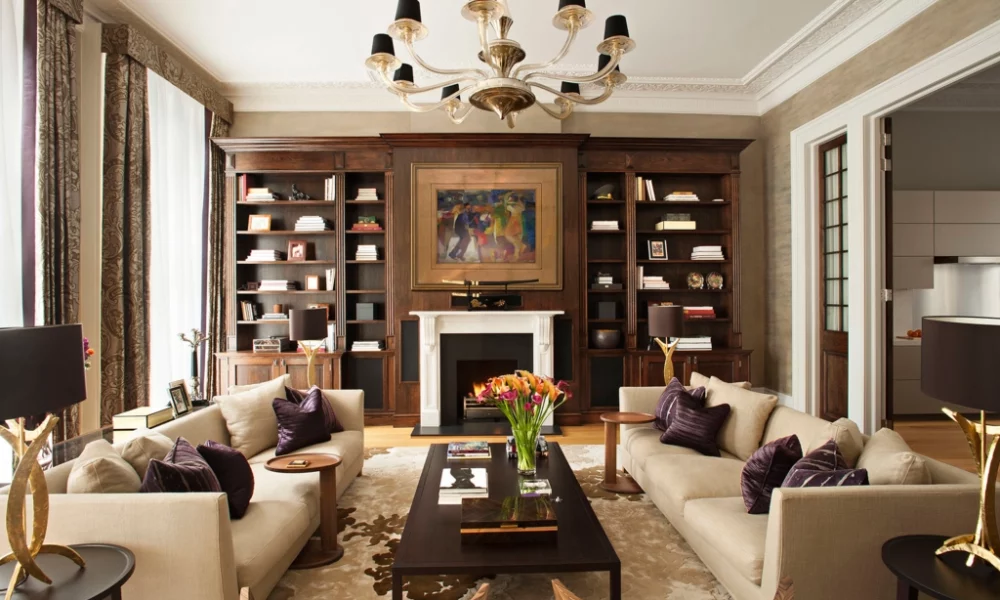The Language of Interiors: Understanding the Principles of Interior Design

Interior design is a complex and multifaceted field that blends art, science, and psychology to create functional and aesthetically pleasing spaces. From residential homes to commercial offices, the principles of interior design play a crucial role in shaping our built environment and influencing our daily experiences. The language of interiors, with its own set of design principles and concepts, is constantly evolving and adapting to meet the ever-changing needs and tastes of individuals and society as a whole. As professionals in the industry, it is our responsibility to understand and apply these principles effectively to create spaces that not only look beautiful but also serve a purpose.
In this article, we will delve into the fundamental principles of interior design and explore how they can be applied to create cohesive and harmonious spaces. By understanding the language of interiors and mastering its principles, we can elevate the quality of our designs and enhance the overall experience of the spaces we inhabit.
Interior design transcends mere aesthetics, embedding itself as a nuanced language that communicates the essence of space, comfort, and personal identity. At the core of creating evocative and meaningful spaces is the selection of Modern Resale authentic durable designer furniture pieces. These elements not only contribute to the visual and functional harmony of an interior but also embody the principles of sustainability and longevity in design.
Proportion: Balance and scale matters.
Achieving balance and scale in interior design is crucial for creating visually appealing and harmonious spaces. Proportion refers to the relationship between objects, furniture, and the overall space they occupy. When designing a room, it is important to consider the size, shape, and placement of each element to ensure a sense of balance and proportion. A common mistake is overcrowding a room with oversized furniture or cramping it with too many small pieces.
On the other hand, using furniture that is too small for a large space can make it feel empty and uninviting. By understanding the principles of balance and scale, designers can create a well-proportioned and visually pleasing environment that enhances the overall aesthetic appeal and functionality of a space.
Harmony: Create cohesion and flow.
To achieve cohesive and flowing interiors, the concept of harmony plays a crucial role in interior design. Harmony refers to the intentional coordination and integration of various design elements to create a unified and pleasing visual experience. It involves ensuring that all elements in a space work together harmoniously, from colors and patterns to textures and materials. By carefully selecting and combining these elements, designers can establish a sense of unity and balance throughout the space. For example, using a consistent color palette or incorporating complementary patterns can create a cohesive and visually pleasing atmosphere.
Additionally, incorporating elements that transition smoothly from one area to another, such as consistent flooring materials or a repeated design motif, can enhance the flow and continuity within the space. Ultimately, by prioritizing harmony in interior design, designers can create spaces that feel cohesive, inviting, and aesthetically pleasing to the eye.
Contrast: Add interest and depth.
Contrast is a fundamental principle of interior design that adds interest and depth to a space. It involves the deliberate juxtaposition of different elements to create visual excitement and focal points within a room. By incorporating contrast, designers can highlight certain areas or objects, creating a sense of drama and impact. This can be achieved through various means, such as contrasting colors, textures, shapes, or styles.
For instance, pairing a sleek, modern furniture piece with a rustic, textured accent can create a visually captivating contrast. Similarly, combining light and dark colors or mixing smooth and rough textures can add dimension and intrigue to a space. By skillfully incorporating contrast, designers can not only capture attention but also create a dynamic and visually engaging environment in which various elements interact harmoniously.
Rhythm: Establish a visual rhythm.
To establish a visual rhythm in interior design, designers aim to create a sense of movement and flow throughout a space. This principle emphasizes the repetition and progression of visual elements, such as colors, patterns, textures, or shapes, to create a cohesive and harmonious environment. By establishing a visual rhythm, designers can guide the eye smoothly from one element to another, creating a sense of balance and unity.
This can be achieved by strategically placing repeated elements at regular intervals, whether it be through a series of identical light fixtures or a patterned wallpaper. Additionally, designers can create a sense of rhythm by gradually changing the scale or intensity of elements, creating a natural progression of visual interest. By employing the principle of rhythm, designers can create a visually pleasing and dynamic space that evokes a sense of continuity and harmony.
Emphasis: Highlight key design elements.
In the world of interior design, the concept of emphasis plays a vital role in creating visually engaging and impactful spaces. The principle of emphasis involves highlighting key design elements to draw attention and create focal points within a room. By strategically placing emphasis, designers can guide and direct the viewer’s gaze towards specific areas or objects, making them stand out and become the center of visual interest.
This can be achieved through various techniques, such as contrasting colors, unique textures, bold patterns, or distinctive shapes. Whether it’s a vibrant accent wall, a statement piece of furniture, or an eye-catching artwork, emphasis adds depth and character to a space, making it more visually dynamic and memorable. By skillfully incorporating emphasis into their designs, interior designers can create spaces that leave a lasting impression on those who experience them.
In conclusion, understanding the language of interiors is essential for creating a cohesive and visually pleasing space. By familiarizing ourselves with the principles of interior design, we can effectively communicate our vision and achieve the desired aesthetic in our homes or in our clients’ spaces. Whether it be through color, texture, or balance, these principles serve as a guide for creating a harmonious and functional interior.
As professionals in the design industry, it is crucial to continuously educate ourselves and stay updated on the latest trends and techniques in order to deliver the best results for our clients. With a strong foundation in the language of interiors, we can confidently transform any space into a beautiful and personalized sanctuary.





